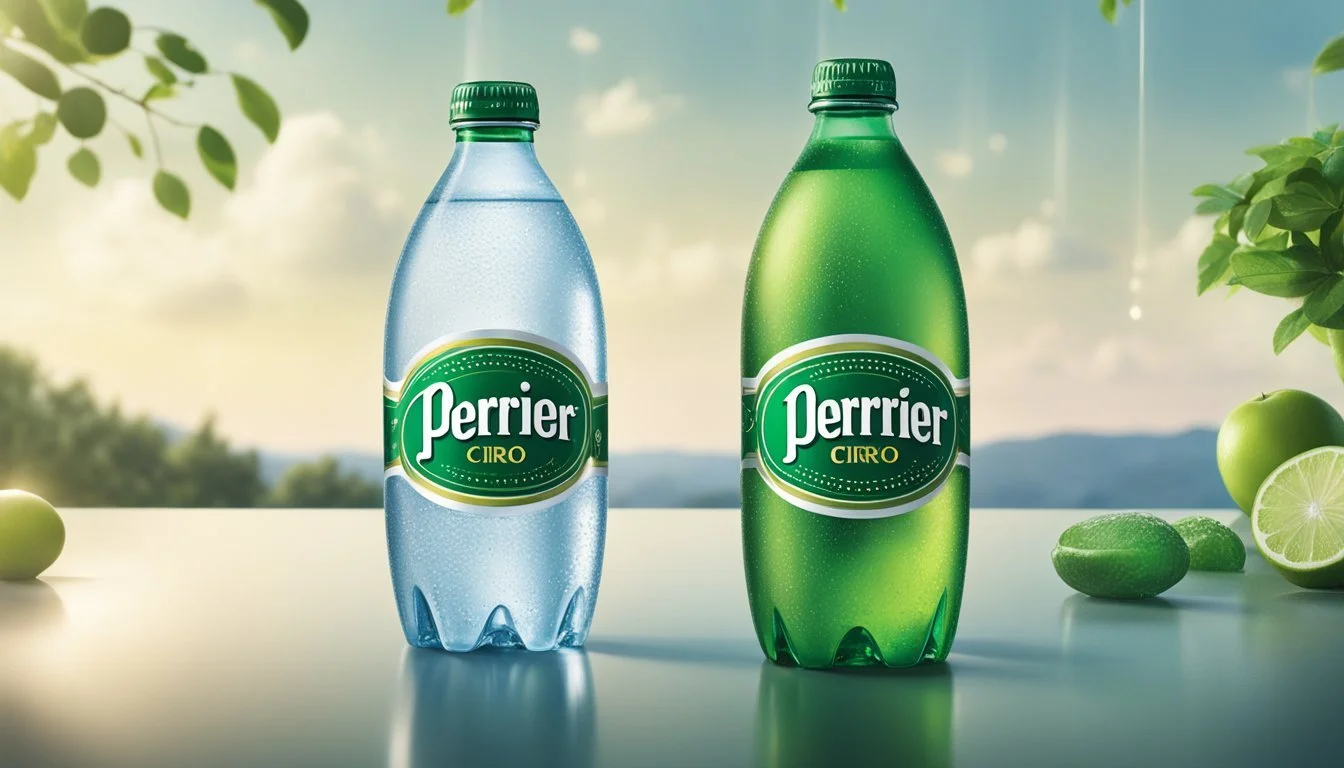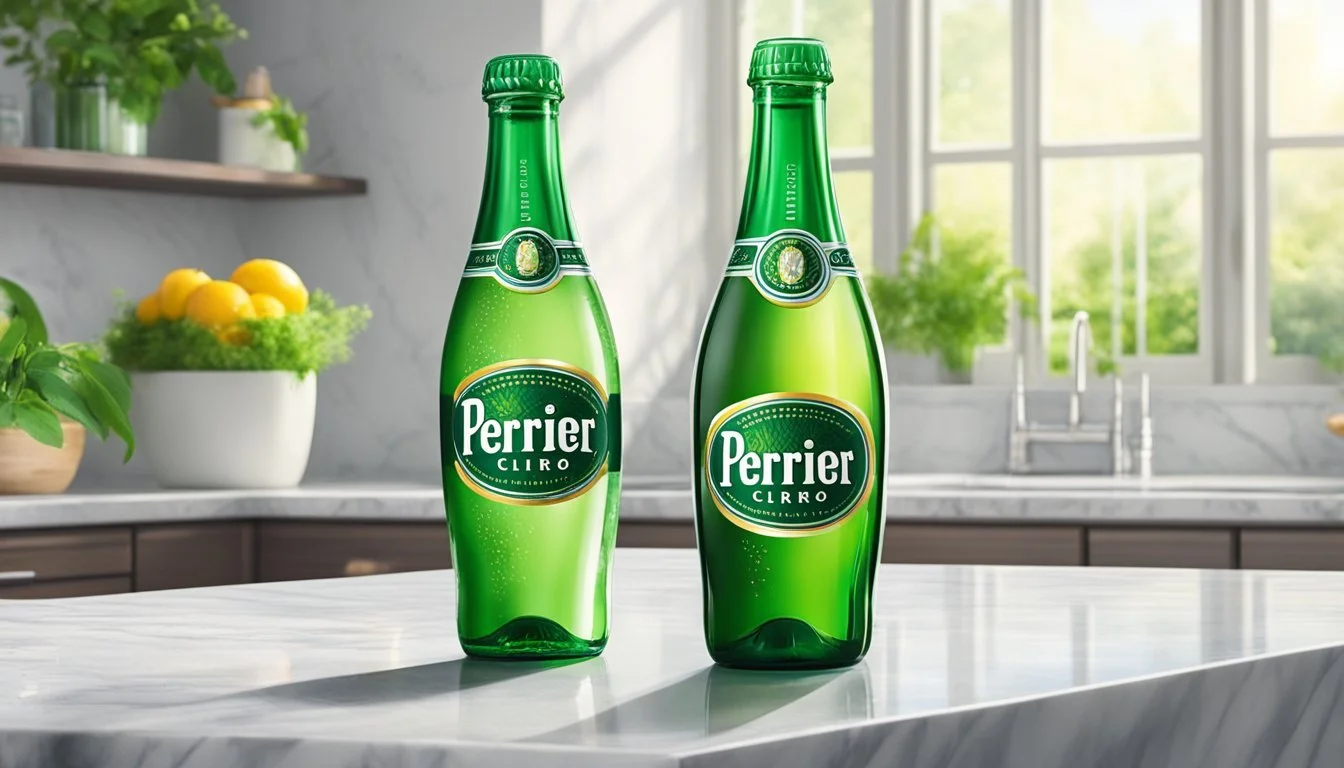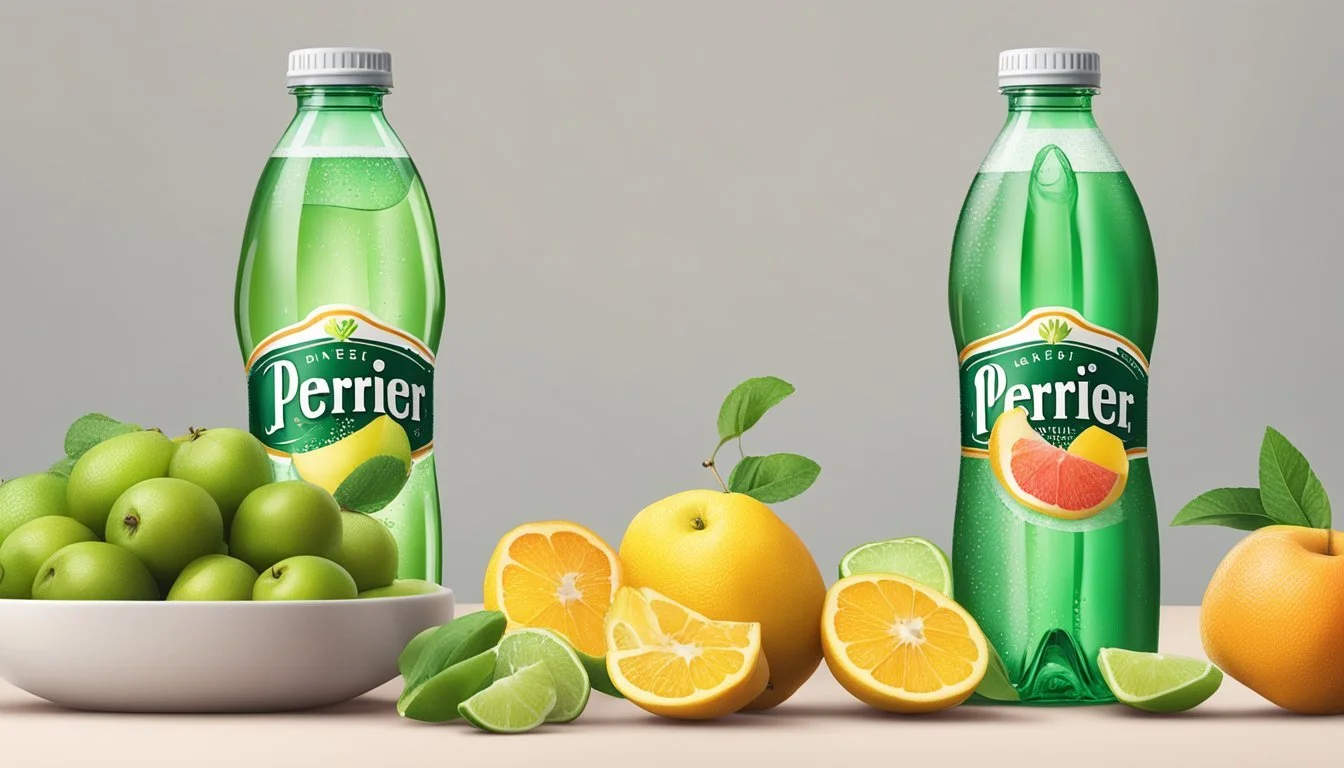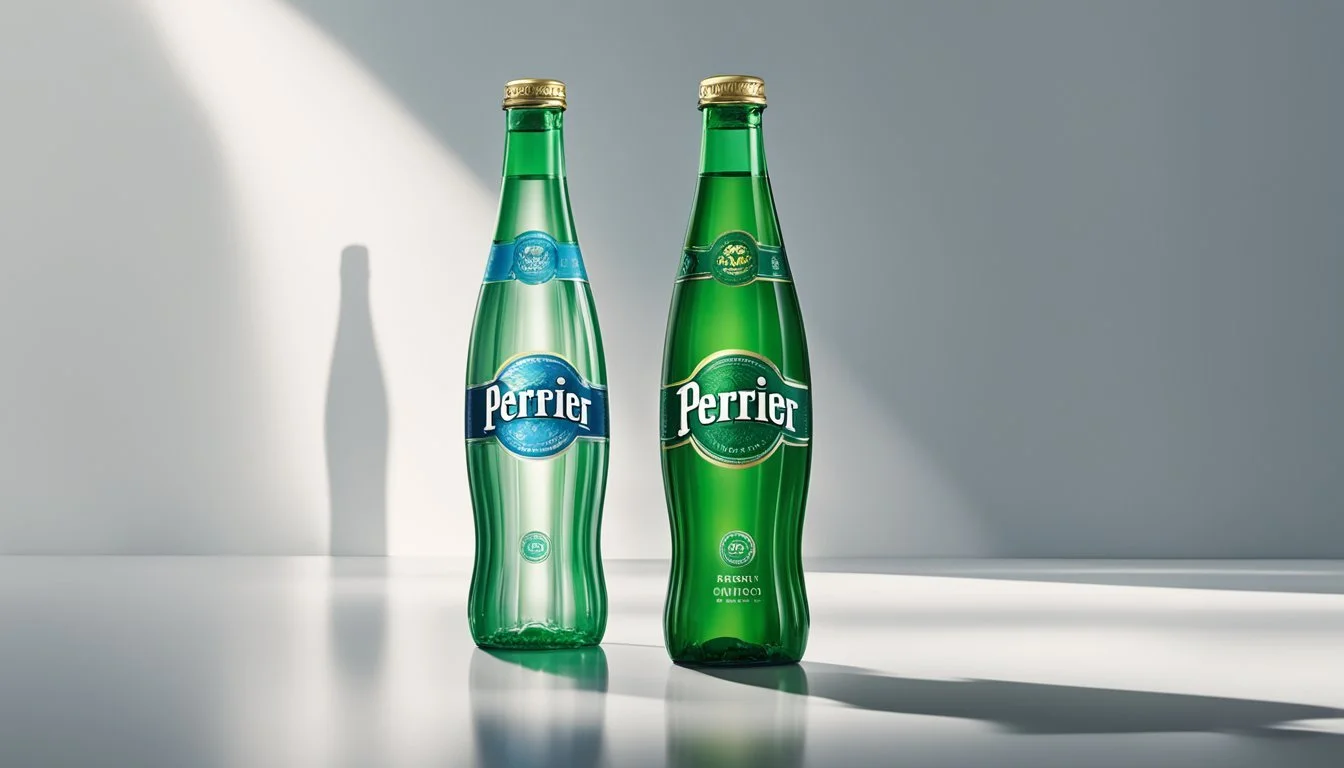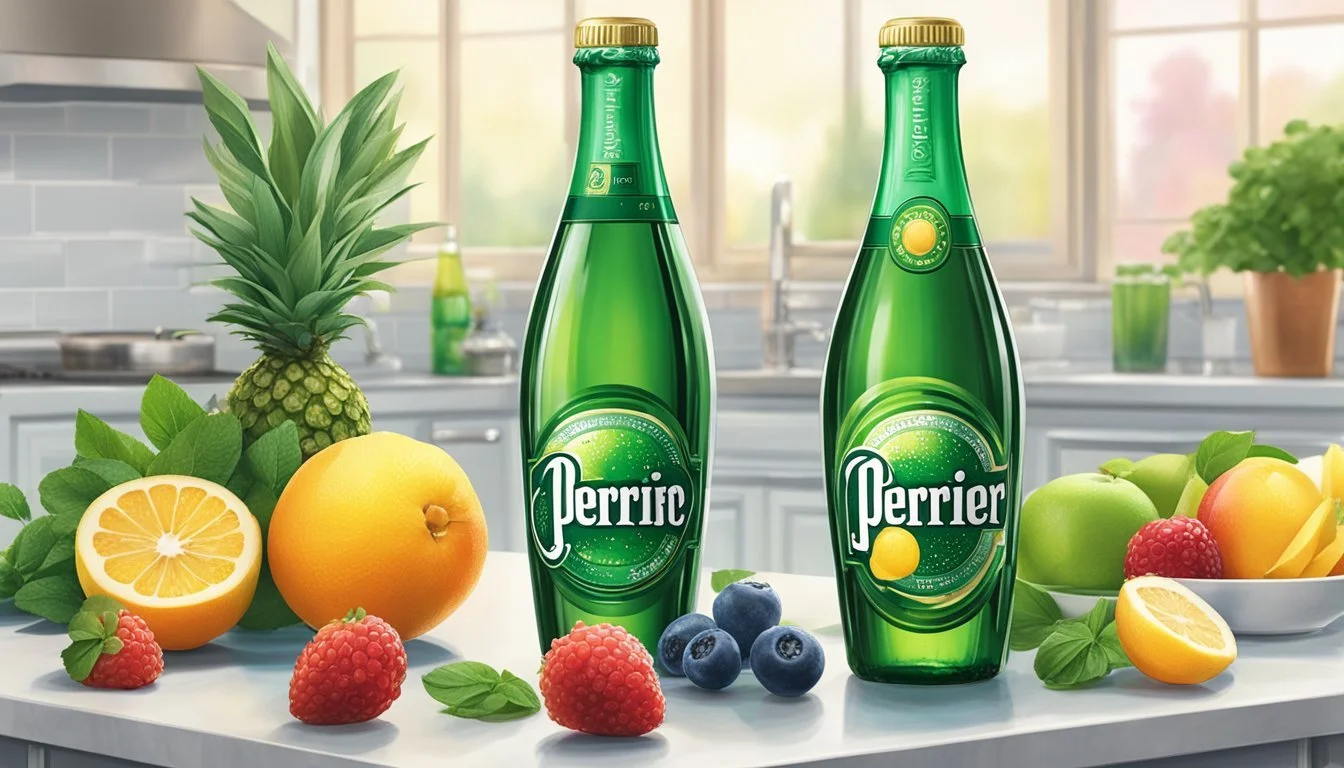Perrier vs. Cirro
The Ultimate Bottled Water Showdown
When it comes to choosing the best bottled water, Perrier and Cirro are often at the forefront of consumer debates. Perrier, known for its crisp taste and distinctive carbonation, has long been a favorite for those seeking a refreshing drink with a touch of sophistication. Cirro, on the other hand, offers a clean and smooth option for hydration, breaking into the market with its commitment to purity and quality.
While Perrier enjoys a legacy of excellence with its classic green bottles and refined bubbles, Cirro competes by emphasizing its pure taste and minimalistic branding. Both brands cater to different preferences, whether one desires the effervescence of sparkling water or the subtle refreshment of still water.
Ultimately, those who appreciate a sparkling sensation with their hydration might lean towards Perrier, whereas individuals seeking a straightforward and pure drinking experience could favor Cirro. This side-by-side comparison not only underlines each brand's unique qualities but also helps consumers make an informed choice based on their personal taste and hydration needs.
Historical Background of Bottled Water Brands
Bottled water brands like Perrier and Cirro have rich histories rooted in their countries of origin. Each brand's journey reflects the evolution of consumer preferences and advances in water extraction and bottling technology.
Perrier: A French Classic
Perrier is a distinguished French brand known for its natural carbonation and iconic green bottle. It sources its water from a spring in Vergèze, located in the Gard département of France. The brand's history dates back to 1863 when it began bottling and selling its sparkling mineral water.
Perrier gained international acclaim in the 1980s, significantly influencing the bottled water market landscape. The brand's expansion was spearheaded by innovative marketing campaigns that positioned its water as both a status symbol and a healthy alternative to sugary sodas. Perrier's acquisition by Nestlé further propelled its global reach and solidified its status as a premium bottled water brand.
Cirro: The Italian Contender
Cirro, an Italian bottled water brand, sources its water from the pristine natural springs in the Italian Alps. The purity and unique mineral composition of these springs contribute to Cirro's distinctive taste and health benefits. Cirro leverages Italy's rich tradition of quality and craftsmanship, ensuring that every bottle meets high standards.
Although newer to the global market compared to Perrier, Cirro has rapidly gained a loyal customer base. The brand is celebrated for its commitment to sustainability, using eco-friendly packaging and engaging in various environmental initiatives. Cirro’s emphasis on quality and environmental responsibility positions it as a strong contender in the bottled water industry.
Mineral Content: What's in the Water?
Analyzing the mineral content of Perrier and Cirro reveals differences in their health benefits and taste profiles. Understanding these distinctions helps in making an informed decision on which bottled water suits best.
Reading the Mineral Profile
Perrier and Cirro come from distinct natural sources which influence their mineral content. Perrier, sourced from Vergèze, France, boasts notable levels of calcium (147 mg/L), magnesium (3 mg/L), and potassium (1 mg/L). It also contains about 10 mg/L of sodium, contributing to its crisp, slightly salty taste.
Cirro, which may originate from a different natural source, includes essential minerals like calcium (approximately 70 mg/L), magnesium (2 mg/L), and potassium (5 mg/L). The sodium content in Cirro tends to be lower, typically around 8 mg/L, resulting in a smoother taste.
Health Implications of Minerals
The minerals present in both Perrier and Cirro offer varying health benefits. Calcium, for instance, supports bone health and muscle function. Perrier’s higher calcium content can be particularly beneficial for those needing an extra source of this nutrient.
Magnesium aids in muscle relaxation and is crucial for nerve functions. While both waters contain magnesium, Perrier has a slightly higher amount, enhancing its health benefits. Sodium levels, although essential in small amounts, can impact flavor and hydration properties. Perrier’s higher sodium content might make it more refreshing, but those on a low-sodium diet might prefer Cirro.
Other trace minerals like fluoride and copper are present in minor amounts and contribute to overall health without making substantial differences between these waters.
Taste and Aesthetics
Perrier and Cirro offer distinct experiences through their unique taste profiles and bottle designs. Their degrees of carbonation and bottle aesthetics also contribute to their overall appeal.
Understanding the Taste Profile
Perrier is known for its bold taste, often described as crisp with a slightly bitter aftertaste. This sparkling water offers a variety of flavors such as lemon, lime, strawberry, and peach. These flavors generally maintain a natural essence without overpowering the mineral quality of the water.
Cirro, on the other hand, provides a smoother taste experience. The flavors available include watermelon, orange, pomegranate, and blood orange. Each adds a subtle sweetness, enhancing the refreshing quality of the sparkling water. Cirro's clean finish often appeals to those who prefer a less intense mineral taste.
The Role of Carbonation
Carbonation levels are crucial in differentiating Perrier and Cirro. Perrier is highly carbonated, featuring vigorous bubbles that create a sharp and invigorating mouthfeel. This high level of carbonation is consistent across all flavors, adding to the overall sensory experience.
Cirro opts for a moderate carbonation level, resulting in softer bubbles that gently tingle on the palate. This makes Cirro a more versatile choice for those who might find high carbonation overwhelming. The bubbles are fine and evenly distributed, providing a smoother drinking experience.
Visual Appeal: Bottle Design
Bottle design plays an important role in the perception of both brands. Perrier comes in an iconic green glass bottle which exudes a classic and sophisticated look. The bottle's tapered design not only makes it easy to handle but also stands out on store shelves, enhancing its premium appeal.
Cirro presents itself in elegant, modern bottles with clean lines and minimalist labels. The transparent glass showcases the clarity of the water, reinforcing an image of purity and freshness. Cirro's design is both functional and visually appealing, catering to consumers who value aesthetics and practicality.
These design choices contribute to the brands' identities, influencing consumer preferences in subtle yet significant ways.
Health Considerations
When comparing Perrier and Cirro, pH levels, acidity, and overall health effects are key factors. Each brand's specific properties impact dental health, digestion, and overall bodily functions.
pH Levels and Acidity
Perrier is a sparkling mineral water known for its effervescence and unique mineral content. Its carbonation results in a slightly acidic pH level, around 5.6, which may not be ideal for dental health, as acidic beverages can erode tooth enamel over time. Despite its lower pH, Perrier contains beneficial minerals like calcium and magnesium, which contribute to electrolyte balance and overall hydration.
Cirro, on the other hand, is typically marketed as a neutral pH water, closely aligning with a pH of 7. This makes it gentler on the teeth and better for maintaining a neutral balance in the body, which is beneficial for digestive health and overall bodily function. Neutral pH waters are less likely to contribute to acid reflux or other digestive issues.
Comparing the two, individuals who prioritize dental health and a neutral body pH might prefer Cirro. However, those who value the mineral content and enjoy sparkling water might lean towards Perrier, despite its slightly acidic nature. Both waters offer unique benefits, and the choice largely depends on individual health priorities and taste preferences.
Environmental and Source Factors
Understanding the environmental and source factors of Perrier and Cirro bottled water reveals key differences in their sustainability and impact on the environment.
Sustainability of the Water Source
Perrier sources its water from a natural spring in the French Alps. This spring is naturally carbonated and the company takes measures to preserve the ecosystem surrounding it. Regular monitoring ensures that the extraction processes do not deplete the water table or harm local flora and fauna.
Cirro, on the other hand, sources its water from various groundwater sources. The sustainability efforts of Cirro focus on ethical sourcing practices and reducing their carbon footprint. Cirro uses advanced filtration systems to ensure water quality while aiming to maintain the natural balance of the aquifers they depend on.
Impact of Bottling Processes
Perrier employs processes that aim to minimize environmental impact. Their bottling involves the use of recyclable glass and PET plastics, and they have initiatives to increase the recycling rate of their bottles. Additionally, the company has implemented energy-efficient technologies in their bottling plants to reduce carbon emissions.
Cirro also emphasizes eco-friendly bottling practices. They use lightweight plastic bottles which require less energy to produce and transport. Cirro is also exploring biodegradable options to further reduce plastic pollution. Their bottling operations strive to be energy-efficient, employing renewable energy sources where possible to reduce the environmental impact.
Brand Positioning and Market Presence
Perrier and Cirro, as prominent players in the bottled water industry, hold distinct places in the market. Their strategies in brand recognition and pricing significantly impact their consumer perception.
Comparing Brand Recognition
Perrier is well-known as a sparkling mineral water with a history dating back to 1863. Its iconic green bottle and naturally carbonated water distinguish it from competitors like San Pellegrino and Topo Chico. Their unique branding and marketing have made Perrier a recognizable name worldwide.
Cirro, while not as historically established as Perrier, has swiftly carved a niche in the premium water category. Competing with brands like Fiji and Voss, Cirro emphasizes purity and health benefits, appealing to a health-conscious clientele. This positioning helps Cirro stand out despite its newer presence.
Price Points and Consumer Perception
Perrier’s price point tends to be higher due to its premium image and unique selling points. It is marketed towards consumers willing to pay more for an upscale, high-quality beverage. This pricing strategy places Perrier alongside other premium brands like Evian and Smartwater.
Cirro, on the other hand, offers a competitive price point, making it accessible to a broader audience. While maintaining high quality, Cirro competes with other affordable premium brands like Pure Life and Poland Spring. This balance of affordability and quality strengthens Cirro’s market presence.
By understanding both brands' approaches to recognition and pricing, consumers can better appreciate their market strategies and positions.
Culinary Uses
Both Perrier and Cirro waters have distinct roles in the culinary world, particularly in enhancing cocktails and pairing with various foods and wines, making them suitable for different gastronomic experiences.
Mixology and Cocktail Integration
Perrier's crisp effervescence and mineral composition make it a popular choice in mixology. Its high carbonation level can elevate cocktails by adding a refreshing texture. Common pairings include classic drinks like the French 75 or a simple Perrier and lime twist. Additionally, Perrier blends well with flavored syrups or fresh fruit juices, such as limonata (lemon), to create sophisticated spritzers.
Cirro water, often available still or lightly sparkling, can subtly enhance cocktails without overpowering them. Mixologists appreciate its neutral profile, making it versatile for mixed drinks where the alcohol's flavors need to shine. Using Cirro with a splash of melograno e arancia (pomegranate and orange) can craft a beautifully balanced cocktail.
Pairing with Food and Wine
Perrier pairs excellently with rich and fatty foods due to its strong bubbles, which help cleanse the palate. It works well with dishes like creamy pastas or charcuterie boards. Perrier's mineral notes also complement a variety of wines, particularly crisp white wines like Sauvignon Blanc or light reds like Pinot Noir. Sommeliers often recommend Perrier for its palate-refreshing qualities during taste tests.
Cirro, with its more subdued profile, is ideal for delicate dishes where strong flavors need a subtle accompaniment. It’s perfect alongside seafood or lightly seasoned vegetables. For wine pairings, Cirro supports the nuanced flavors of fine wines without overwhelming them, making it a favorite among wine enthusiasts and sommeliers for its versatility.
Consumer Preferences
Consumer choices for bottled water often reflect a mixture of taste preferences, brand loyalty, and perception of health benefits. Factors like flavor options and market trends significantly influence these preferences.
Surveying Popularity and Trends
The popularity of Perrier and Cirro hinges on both their brand identity and market reach. Perrier, known for its sparkling water, offers unique flavors such as L’Orange and Peach Watermelon. This variety attracts a broad audience seeking more than just hydration.
Cirro, with its focus on still water purity and balanced mineral content, appeals to health-conscious consumers. It has gained a foothold with trends emphasizing clean, unflavored water.
Health trends also play a role. Consumers increasingly look for bottled water with optimal pH levels and essential minerals, shaping their preferences toward brands like Perrier and Cirro.
Individual Taste and Flavor Preference
Flavor preferences vary widely among consumers. Perrier’s diverse range, including Strawberry Lime, L’Orange, and Peach Watermelon, caters to those who enjoy a hint of fruit in their hydration. These options offer a refreshing alternative to plain water.
Cirro, typically offering still, unflavored water, targets those who prioritize the natural taste of pure water. This appeals to individuals who appreciate the subtleties of mineral content without added flavors.
The choice between Perrier and Cirro often boils down to personal taste. While some favor Perrier's bubbly and flavored options, others prefer the clean simplicity of Cirro’s unadulterated water.
Scientific Insights and Future Outlook
Exploring the innovations in the bottled water industry and examining recent health studies provides valuable insights. These considerations are crucial as they influence both market trends and consumer preferences.
Innovation in the Bottled Water Industry
Innovations in bottled water are driven by advances in filtration technology, packaging, and sustainability. New filtration methods, such as ultraviolet (UV) purification and reverse osmosis, ensure that brands like Perrier and Cirro offer purer products.
Packaging innovations focus on reducing plastic waste. Biodegradable and recyclable materials are becoming the norm. Some companies are even experimenting with plant-based bottles.
Consumer demand for healthier options has led to fortified waters. These include electrolytes, vitamins, and minerals tailored to meet specific health needs.
Health Studies and Research
Recent health studies highlight the benefits and concerns associated with bottled water consumption. Research shows that mineral waters like Perrier can provide essential minerals such as calcium and magnesium.
Studies have also examined the potential presence of microplastics in bottled water. This has led to increased scrutiny and tighter regulations.
Health experts recommend staying informed about water quality. Testing for contaminants ensures safety and compliance with health standards, supporting better consumer choices.
More About Perrier
Icelandic Glacial vs Perrier: Which Bottled Water is Better?
Mountain Valley Spring Water vs Perrier: Which Bottled Water is Better?
Perrier vs Kirkland Signature: Which Bottled Water is Better?
Perrier vs Richard's Rainwater: Which Bottled Water is Better?
Perrier vs Whole Foods Italian Still Mineral water: Which Bottled Water is Better?


